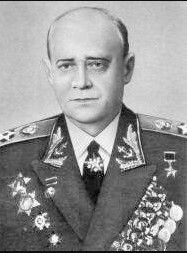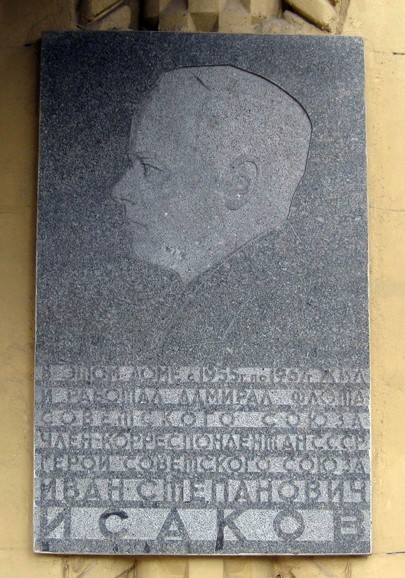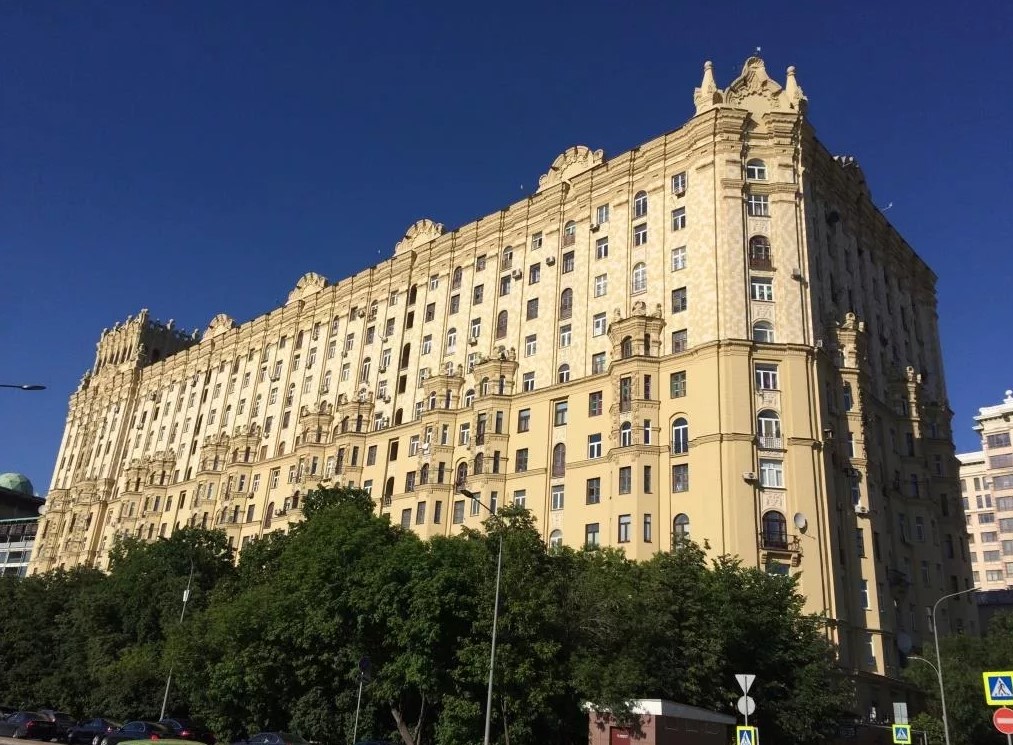Ivan Stepanovich
Isakov
1894-1967

Ivan (Hovhannes) Stepanovich Isakov (Isaakian) was Inspector General of the Group of Inspectors General of the Ministry of Defense, Admiral of the Fleet of the Soviet Union was born on August 10 (22), 1894 in the village of Adjikend, Elizavetpol province (now it is an urban-type settlement in Azerbaijan), in the family of a railway employee. He was Armenian. In 1913 he graduated from the Tiflis City Real School and in the same year entered the St. Petersburg Institute of Technology. With the outbreak of the First World War, on September 15, 1914, he entered Separate Midshipman classes, from which he graduated in March 1917. He was appointed to the destroyer «Izyaslav» of the Baltic Fleet as an auditor. He was a participant in the Unomisund defensive operation in October 1917, received a concussion in battle. After the October Revolution, in January 1918, he was elected senior officer of the destroyer «Izyaslav» by the team. He participated in the Ice campaign of the Baltic Fleet in February-March 1918. He had military rank in the Russian Imperial Navy – midshipman (03/25/1917). During the Civil War in Russia, immediately after the creation of the Workers’ and Peasants’ Red Fleet in February 1918, he was enlisted as a volunteer in its composition. From March 1918 he served on ships of the Baltic Fleet – on the minesweeper Riga, gunboat No. 1, from August 1918 – assistant commander of the destroyer Transbalt. He graduated from the courses of trawling and barrage commanders in July 1919, was appointed senior assistant to the commander of the patrol ship Kobchik, which took part in repelling the attack of British torpedo boats and aircraft on ships in Kronstadt. In March 1920, I.S. Isakov was appointed flagship specialist in trawling and barrage and at the same time commander of the destroyer “Active” of the Caspian Flotilla. He participated in the battles on the Caspian Sea against the White Guards and the British interventionists. Since June 1920, Isakov I.S. again served in the Baltic Fleet, commander of the minesweeper “Anchor”, which carried out trawling in the Gulf of Finland. Since August 1920 he was Senior assistant commander of the destroyer “Winner”. Since December 1920 he had been Senior Assistant commander and commander of the destroyer «Izyaslav». In November 1922, he was transferred to the Black Sea, enlisted in the service of the Chief of Communications of the Black Sea Naval Forces (MCHM, then the Black Sea Fleet), from January 1923 – head of the South Black Sea Branch of the MCHM Surveillance and Communications Service, from April 1923 – senior naval chief of the Batumi Naval Base, from August 1923 – Head of the operational department of the Monitoring and Communication Service of the MSCHM, since October 1923 – Assistant chief of the operational part of this service. Since August 1924 he had been commander of the destroyer «Corfu» (renamed «Winner» in 1925) on the Black Sea, since October 1925 – Assistant Chief of Staff, and since September 1926 – Head of the Operational Department – Deputy Chief of Staff of the Black Sea Naval Forces. In May-June 1928 he commanded a detachment of ships of the fleet that made a friendly trip to Turkey. In 1928 he graduated from the advanced training courses of the higher commanding staff at the Naval Academy. Since August 1928 he had been a Chief of Staff of the Naval Forces of the Black Sea, since November 1929 – Assistant Chief of the Marine Sector in the Operational Directorate of the Red Army Headquarters, since March 1932 – Senior lecturer at the Naval Academy, since October 1933 – Chief of Staff of the Baltic Fleet. In June-October 1933 I.S. Isakov headed the special purpose expedition No. 2 for the transfer of ships from the Baltic to the White Sea via the White Sea-Baltic Canal. However, in August 1935, he was removed from the post of Chief of the Fleet staff for the death of the submarine “B-3” with the entire crew during the fleet exercises. He was sent to teach at the Naval Academy. In January 1937, he was appointed Chief of Staff of the Baltic Fleet for the second time, in August of the same year Isakov I.S. became commander of the Baltic Fleet. From January 1938 he was Deputy, from April 1939 to April 1946 – First Deputy People’s Commissar of the USSR Navy. At the same time, concurrently from June 1938 to August 1939 he was Head of the Naval Academy, and from October 1940 to June 1943 – Chief of the Main Naval Staff. Since the beginning of the Great Patriotic War, in the city of Leningrad, he coordinated the combat operations of the Baltic Fleet, Ladoga and Peipsi flotillas with ground forces in the defense of the city. In October 1941, together with the command of the Black Sea Fleet and the Transcaucasian Front, he prepared an amphibious operation on the Kerch Peninsula. Since April 1942 he had been Deputy Commander-in-Chief and member of the Military Council of the North Caucasian direction, then the North Caucasian Front. He coordinated the actions of the Black Sea Fleet and ground forces, supervised the supply of Sevastopol. Since August 1942 he had been Deputy Commander and member of the Military Council of the Transcaucasian Front. He took part in directing the actions of the Black Sea Fleet and the Caspian Flotilla in the Battle for the Caucasus. On October 4, 1942 he was seriously wounded in a German air raid on the Goitkh Pass, near the city of Tuapse. From October 1942 to 1945, he was recovering in a hospital after amputation of a leg, during treatment he continued research and staff work. Since February 1946 he had been Admiral of the Fleet Isakov I.S., Chief of the General Staff of the USSR Navy. Since February 1947 he had been Deputy Commander-in-Chief of the USSR Navy. From March 1950 to February 1956, he retired due to illness. At this time, he continued to work as the executive editor of the “Sea Atlas” (which he became in 1947 and was until 1954), and from October 1954 he worked as Deputy Minister of the USSR Navy. Since February 1956 he was again in military service, was on special assignments under the Minister of Defense of the USSR, since April 1957 – scientific consultant to the Minister of Defense of the USSR. Since April 1958 he had been Inspector General of the Group of Inspectors General of the Ministry of Defense. By the Decree of the Presidium of the Supreme Soviet of the USSR dated May 7, 1965, Admiral of the Fleet of the Soviet Union Isakov Ivan Stepanovich was awarded the title of Hero of the Soviet Union with the award of the Order of Lenin and in commemoration of the 20th anniversary of the Victory of the Soviet people in the Great Patriotic War for the skillful leadership of the troops, courage, bravery and heroism shown in the fight against the Nazi invaders, and in commemoration of the 20th anniversary of the Victory of the Soviet People in the Great Patriotic War. He got Gold Star medals. I.S. Isakov devoted a lot of effort and energy to further increasing the combat power of the USSR Navy, developing its operational art and tactics, studying and generalizing the experience of the Great Patriotic War. He was the author of over sixty scientific papers, as well as several fiction novels and collections of short stories. Under his direct supervision, two volumes of the «Sea Atlas» were prepared and published.
Address: Moscow, Smolenskaya nab., 5/13

